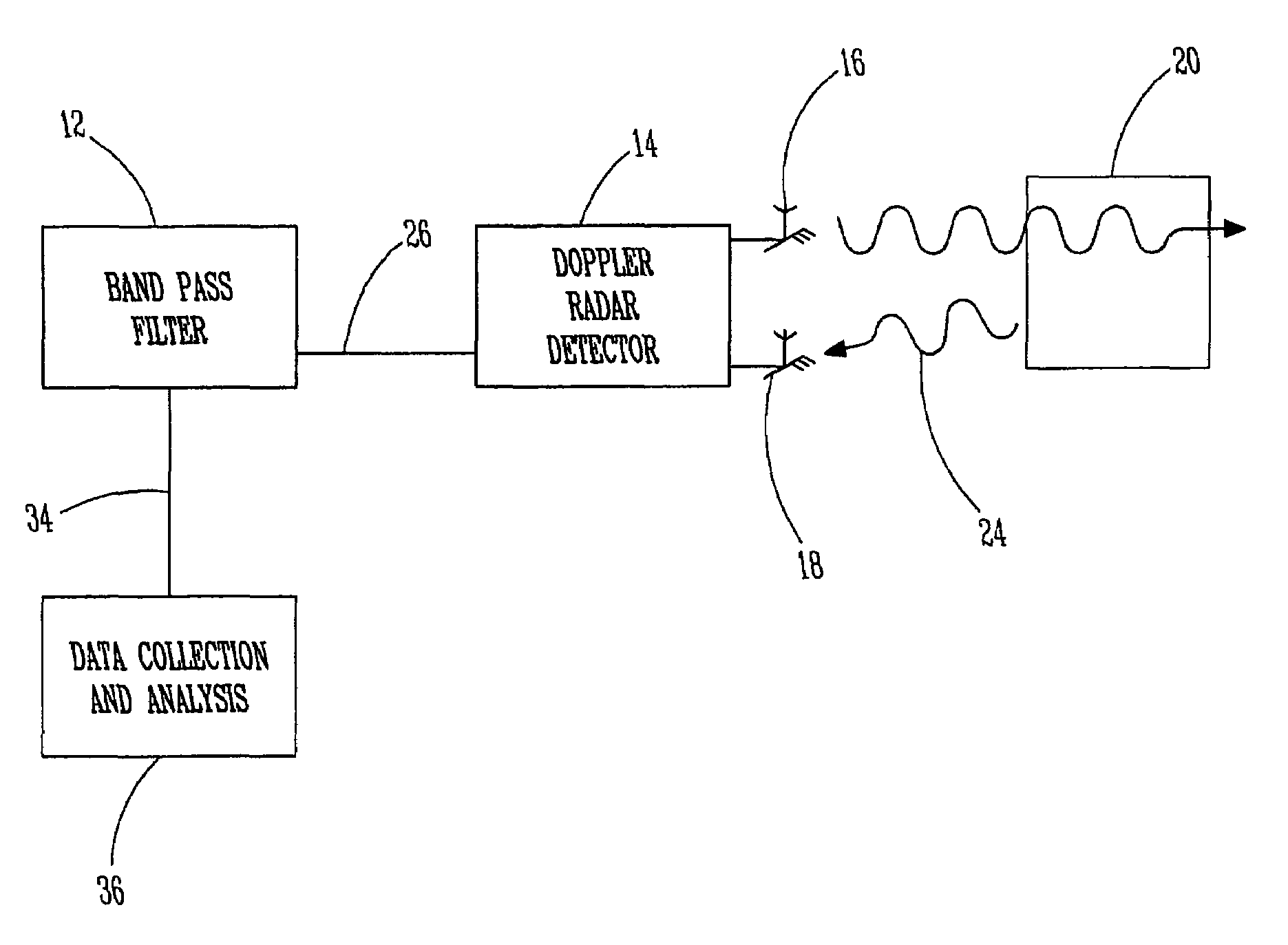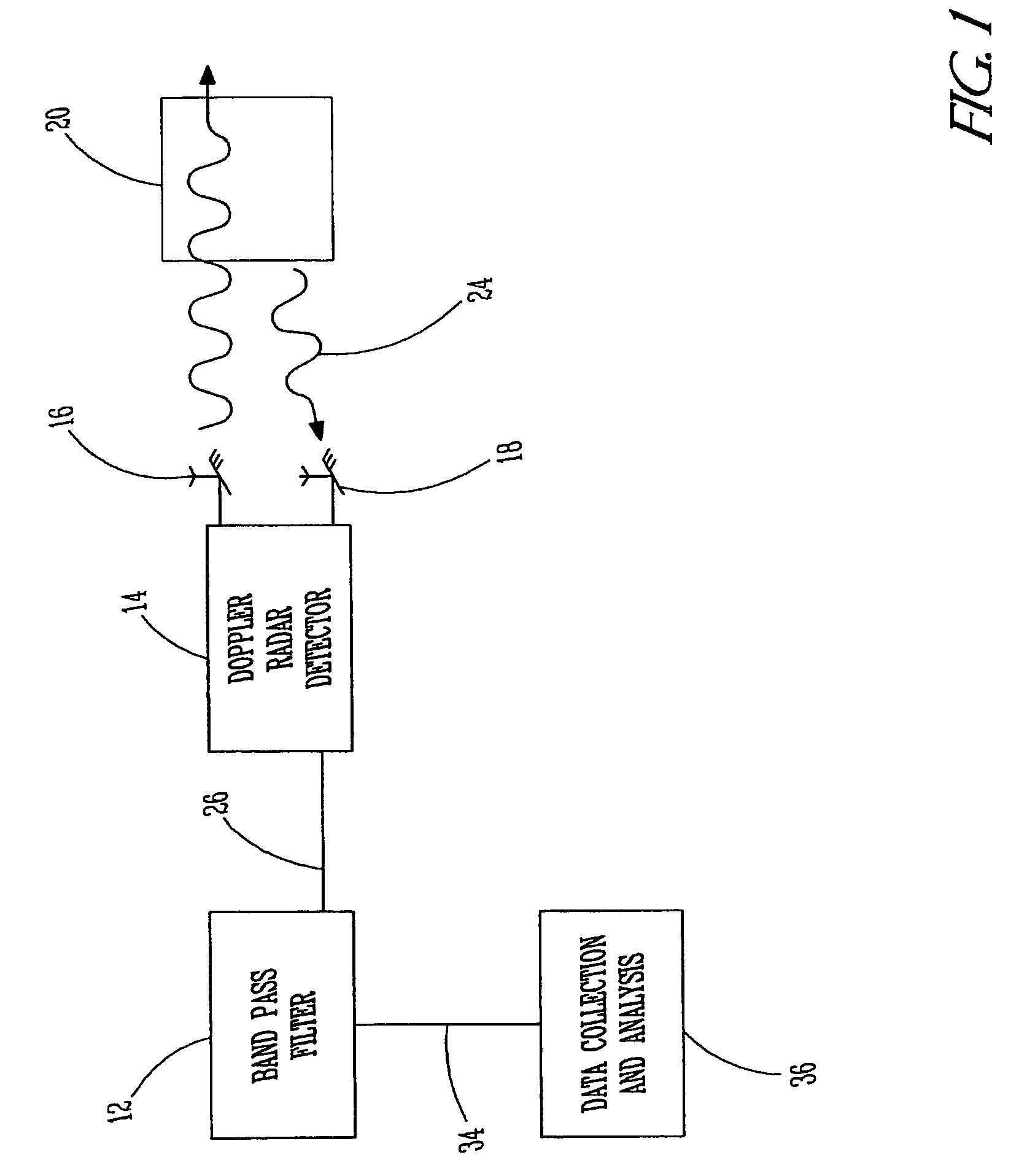Method for detecting acoustic emission using a microwave Doppler radar detector
a radar detector and microwave technology, applied in the field of detecting acoustic emission using a microwave doppler radar detector, can solve the problem that the tool wear can be detected during on-line machining operations
- Summary
- Abstract
- Description
- Claims
- Application Information
AI Technical Summary
Benefits of technology
Problems solved by technology
Method used
Image
Examples
experiment 1
Results
[0113]FIG. 4 shows representative signals generated by the microwave Doppler radar detector 14 and the accelerometer in response to acoustic emission events created by tapping a CNC machine tool insert against a cylindrical aluminum test specimen.
[0114]FIG. 5 shows corresponding power spectra for the signals shown in FIG. 4. The power spectra was computed using MathCAD fft function. While the accelerometer appears to ring at a given frequency, the microwave radar detector 12 and band-pass filter 14 tend to give a more broad-band response, which may more accurately reflect actual characteristics of the AE event.
[0115]As seen in FIG. 4, the Doppler radar detector 14 and band-pass filter 12 detects a secondary AE event, which may be the reflected acoustic wave. If the secondary acoustic emission event is the reflected acoustic wave, then the Doppler radar detector 14 may detect small-scale surface vibrations caused by both the initial tool contact and the reflected acoustic wave...
experiment 2
Results
[0123]FIG. 6 shows representative signals generated by microwave Doppler radar detector 14 and the accelerometer in response to acoustic emission events created by breaking a 0.7 mm mechanical pencil lead on the bottom surface of the test specimen. FIG. 7 shows corresponding power spectra for the signals shown in FIG. 6. Note that, at the given distance of 0.5 feet, output signal level from the microwave Doppler radar detector 14 is roughly ten times that of the accelerometer sensor. As a result, FIGS. 6 and 7 use different scales. These figures show that the two sensors apparently both detect acoustic emission events generated by breaking a 0.7 mm pencil lead on an aluminum test specimen.
[0124]Regression analysis of the data from all fifteen Experiment 2 trials, shown in Table 6, shows evidence of a statistically significant relationship between the natural logarithm of sensor peak-to-peak output voltage and distance between the microwave Doppler radar detector 14 and the te...
PUM
| Property | Measurement | Unit |
|---|---|---|
| frequency | aaaaa | aaaaa |
| frequency | aaaaa | aaaaa |
| frequency | aaaaa | aaaaa |
Abstract
Description
Claims
Application Information
 Login to View More
Login to View More - R&D
- Intellectual Property
- Life Sciences
- Materials
- Tech Scout
- Unparalleled Data Quality
- Higher Quality Content
- 60% Fewer Hallucinations
Browse by: Latest US Patents, China's latest patents, Technical Efficacy Thesaurus, Application Domain, Technology Topic, Popular Technical Reports.
© 2025 PatSnap. All rights reserved.Legal|Privacy policy|Modern Slavery Act Transparency Statement|Sitemap|About US| Contact US: help@patsnap.com



